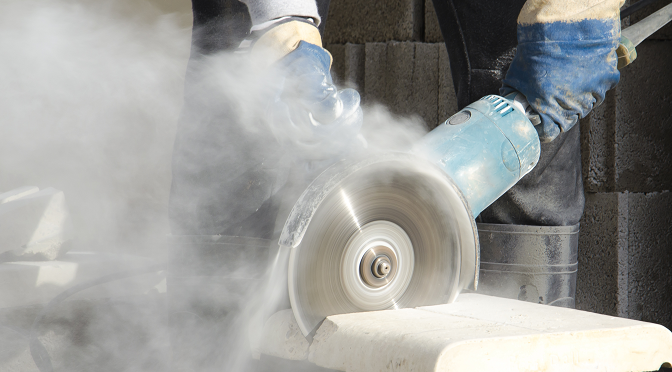Book an appointment today
Provision of general WHS Advice: Help desk/Retainer or Onsite contractor approach
Effective Safety can provide a dedicated resource for ongoing health and safety consulting and knowledgeable WHS advice, as well as providing assistance when WHS issues arise.
Gap Analyses / Audits against AS 4801, ISO 45001, National Audit Tool and legislative requirements
Effective Safety performs a detailed onsite assessment by way of a gap analysis or audit within your workplace against the relevant occupational health and safety policy. The results are then evaluated and detailed in a report provided to your business, including improvement recommendations in line with legislative requirements.
Systems, Policy & Procedure Development
Effective Safety works collaboratively with your organisation to develop systems, policies and procedures, in line with regulated health and safety policy and the requirements of your workplace.
Risk Profiling and development of WHS Strategic Plans
Effective Safety will complete a detailed evaluation of the procedures being undertaken in your workplace in order to assess the overall risk profile of your organisation. Based on the results, you will be provided with strategic recommendations to improve the WHS policies and processes in your business.
Governance
Effective Safety will work in collaboration with your organisation to develop effective WHS Reporting Structures for Executives and Boards in your business.
- Work health and safety management systems
- System auditing
- Risk assessments
- Strategic safety plans, objective setting, and performance management plans
- Site safety plans
- Safety management plans
- Risk control plans and risk management
- Hazardous substances
- Safety inspections and audits
- Supplier and contractor compliance audits
- Internal audits
- Workers compensation premium reduction
- Coaching and mentoring safety team members
- Return to Work management
- Chain of responsibility guidance
Occupational Hygiene Services
Noise Assessments
In Queensland, Occupational Noise Monitoring is required where employers are potentially exposing workers to elevated levels of noise in the workplace.
Dust Monitoring
Exposure of workers to excessive levels of dust in the workplace can lead to respiratory disease and place employers at risk of breaching the Work Health and Safety Regulations.
Indoor Air Quality
Indoor Air Quality (IAQ) Assessments should be conducted in workplaces where the indoor environment is provided with air conditioning or other form of climate control.
Contract HSE&Q Services
We can provide a range of contract services to assist your business comply legal requirements and achieve an organisational culture beyond compliance.
For more information please click here

OCCUPATIONAL NOISE MONITORING
In Queensland, Occupational Noise Monitoring is required where employers are potentially exposing workers to elevated levels of noise in the workplace.
Noise Monitoring can be performed as personal or static noise monitoring.
Personal noise monitoring is conducted by attaching a noise dosimeter device to the lapel of workers and monitoring their noise exposure levels over a standard work shift (often 8 hours).
Static noise monitoring is performed in identified locations including those in the vicinity of noise-generating machinery. Static noise monitoring is performed using a hand-held Type 1 or 2 sound level meter (SLM). Static noise monitoring is normally conducted for shorter durations in multiple locations within a noisy work environment.
Effective Safety & Training conducts monitoring in general accordance with AS1269.1:2005 Occupational noise management Part 1: Measurement and assessment of noise immission and exposure.
The results of noise monitoring are compared against the noise exposure standard specified in the Queensland Managing Noise and Preventing Hearing Loss at Work Code of Practice-2011. The exposure standard has been set to protect the majority of workers in a workplace against the possibility of suffering Noise Induced Hearing Loss (NIHL). The exposure standard is defined in the regulations as:
The 8 hour equivalent continuous sound pressure of 85 dB(A) measured in A-weighted decibels referenced to 20 micropascals at an employee’s ear position; or
The C-weighted peak holds sound pressure level reading of 140 dB(C) measured in decibels referenced to 20 micropascals at an employee’s ear position.
Sound pressure levels above the 8 hour exposure standard of 85 dB(A) are allowable, provided that the A-weighted average over an 8 hour period is below the standard. Where individuals work shifts are longer than 8 hours, the A weighted exposure standard must be lowered accordingly. The C-weighted peak level of 140 dB(C) must not be exceeded at any time.

DUST MONITORING
Exposure of workers to excessive levels of dust in the workplace can lead to respiratory disease and place employers at risk of breaching the Work Health and Safety Regulations.
We can help by establishing a monitoring regime to help ensure occupational exposure standards are not being exceeded. We have experience of dust monitoring in open cut coal mining, factories, construction sites, retail/commercial properties and even office buildings.
Dust monitoring can be conducted as personal or area monitoring.
Personal dust monitoring is undertaken on nominated personnel in accordance with Australian Standard AS 3640-2009 Workplace atmospheres – Method for sampling and gravimetric determination of inhalable dust. This method involved the collection of dust onto a pre-weighed PVC filter contained within a sampling device (to collect either inhalable or respirable fractions of dust), connected to a pre-calibrated sampling pump. Workers wear the sampling pump on their belt and the filter is positioned within their breathing zone and fixed to their lapel. The filters, under chain of custody documentation are sent to an independent third party laboratory to undergo gravimetric analysis. The change in filter weight is used to calculate the concentration of inhalable or respirable dust.
Similar monitoring equipment can be positioned strategically within the workplace to sample general dust levels.
Effective Safety and Training can also utilise real-time dust monitoring devices that use a photo-ionising detector (PID) which gives immediate results (but which cannot be directly related to personal exposure standards).
Need more information about our services?